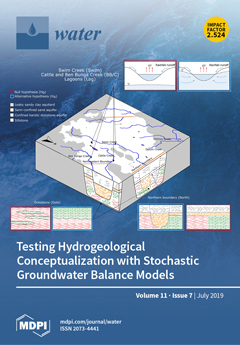Hydrodynamic conditions are considered to be very important in the control of algal blooms. Weekly or daily measurements may miss some important events in the hydrodynamic process, resulting in inaccurate evaluations of the impacts of hydrodynamics on phytoplankton. In this study, high-frequency (15-min
[...] Read more.
Hydrodynamic conditions are considered to be very important in the control of algal blooms. Weekly or daily measurements may miss some important events in the hydrodynamic process, resulting in inaccurate evaluations of the impacts of hydrodynamics on phytoplankton. In this study, high-frequency (15-min interval) measurements were used to analyze the effect of water column stability on surface chlorophyll
a (Chl
a) and lag time under different nutrient backgrounds during a cyanobacterial bloom in the Three Gorges Reservoir, China. Cross-correlation analysis between the relative water column stability (RWCS) and Chl
a was performed at different stages. The results showed that the RWCS above the euphotic depth influenced the surface Chl
a concentration most significantly. A lower RWCS (<20) limited the increase in the Chl
a concentration, and a higher RWCS caused a significant increase in Chl
a only when nutrients were not limited (TN/TP < 29) and light and temperature conditions were suitable. It took a short time for a higher RWCS to significantly increase the surface Chl
a concentration compared with a lower RWCS. When the waterbody had a very low Chl
a concentration (almost 0), approximately 2 days were needed to significantly increase the Chl
a concentration, while approximately only half an hour was needed when the background concentration of Chl
a was slightly higher. During the bloom period, a decline in the RWCS significantly decreased the Chl
a in a very short time (approximately half an hour). Reducing the water column stability could be a good approach to control cyanobacterial blooms.
Full article





